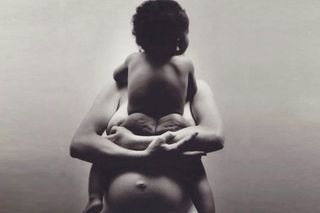
More Mothers and Newborns Are Surviving Childbirth Than Ever — But Only in Some Parts of the World
In countries with poor access to good medical facilities, one newborn or mother still dies every 11 seconds, per a WHO-UNICEF report.

There‘s good news: more women and their children are surviving today than ever before, per a recent report released by the United Nation’s Children’s Fund (UNICEF) and the World Health Organization (WHO). However, the bad news is, every 11 seconds, a pregnant woman or newborn still dies somewhere in the world.
The reason behind both is the different kinds of access people have to medical facilities globally. While some countries have made exponential progress in medication increasing peoples’ chances of survival, on the other hand, other countries still lag behind in offering even basic facilities such as clean water or vaccines putting women’s and their babies’ lives at risk. “In countries that provide everyone with safe, affordable, high-quality health services, women and babies survive and thrive,” Dr. Tedros Adhanom Ghebreyesus, director-general of the WHO, said in a press release.
According to estimates, since 2000, child deaths have halved and maternal deaths have reduced by more than one-third, “…mostly due to improved access to affordable, quality health services,” the press release states.
But in 2018, at least 6.2 million children under 15 years also died. Of these, 5.3 million died before the age of five, and more than half of these 5.3 million died in the first month of being born. Additionally, 290,000 women died from pregnancy and childbirth complications.
Women and their newborns are most vulnerable in the first month after delivery. According to the report, an estimated 2.8 million pregnant women and newborns die every year, which translates to one death of women or children every 11 seconds, “…mostly due to preventable causes,” states the press release. For newborns, these causes include pneumonia, diarrhea, malaria. For older children, the reasons could vary from injuries to road traffic injuries and drowning.
This is especially true in India’s case — around 60,000 children die in road accidents every year. This figure is more than the total child death rate in war-torn Syria. In the past decade alone, while 41% of children between ages 0 and 18 have died due to road accidents, 31% have died due to accidents at home, 19% due to drowning, and 6% due to falling.
Per the current report, the reasons for maternal deaths include obstetric complications such as high blood pressure during pregnancy or severe bleeding or infections during or after childbirth, or due to a disease that gets aggravated by the effects of pregnancy.
In terms of how each country performed, India features among the top five countries that account for 50% of deaths of children under 5 years of age in 2018. Other countries include the Democratic Republic of the Congo, Ethiopia, Nigeria, and Pakistan. In fact, in the same year, India, along with Nigeria, accounted for one-third of under-5 deaths.
Related on The Swaddle:
Nowhere in India Are C‑Section Rates What They Should Be
But, countries around the world have also made progress in reducing child and maternal mortality rates. According to estimates, child deaths under 15 years of age have been reduced by 56% since 1990, with Eastern and South-Eastern Asian countries making the most progress (recording an 80% decline in deaths of children under 5).
Whereas for maternal mortality between 2000 and 2017, the rates reduced by 38% all over the world. But Southern Asia made the most progress, having reduced maternal mortality ratioby nearly 60% since 2000.
Although India featured in the top five when it came to children and women’s death rates,it also made slight progress. The report pointed out that the children’s under-5 mortality rate of 126 deaths per 100,000 births in in 1990 reduced to 37 deaths per 100,000 births by 2018. This translates to an annual reduction rate of 3.5%. India’s neonatal mortality also declined, from 57 deaths per 100,000 live births in 1990 to 23 deaths per 100,000 live births in 2018.
But the numbers above feel like a drop in the ocean if we look at how many children and mothers died in the same period. While 882,000 children under 5 and 143,000 children between ages 5 and 15 died in 2018, 549,000 mothers died that year due to pregnancy and childbirth-related complications. It, then, becomes clear that despite improvements, neonatal and maternal mortality still remains a public health challenge, especially for a country like India.
“Around the world, birth is a joyous occasion. Yet, every 11 seconds, a birth is a family tragedy,” said Henrietta Fore, UNICEF’s executive director, in the press release. “A skilled pair of hands to help mothers and newborns around the time of birth, along with clean water, adequate nutrition, basic medicines, and vaccines, can make the difference between life and death. We must do all it takes to invest in universal health coverage to save these precious lives.”
Anubhuti Matta is an associate editor with The Swaddle. When not at work, she's busy pursuing kathak, reading books on and by women in the Middle East or making dresses out of Indian prints.
Related


Understanding Phobias: What They Are and Why They Happen
